- Clone
- A16086F (See other available formats)
- Regulatory Status
- RUO
- Other Names
- Tumor necrosis factor receptor superfamily member 6 (TNFRSF6), ALPS1A, APO-1, Apoptosis antigen 1 (APT1), CD95, FAS1, FASTM, FS-7-associated surface antigen
- Isotype
- Mouse IgG2b, κ
- Ave. Rating
- Submit a Review
- Product Citations
- publications
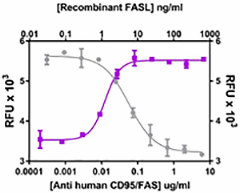
-

Recombinant FASL induces cytotoxic effect in Jurkat human T cell leukemia cells in a dose dependent manner (grey circles). Anti-human - CD95 monoclonal antibody (clone A16086F, purple squares) blocks the cytotoxic effect induced by recombinant human FASL (60 ng/ml). The ND50 = 0.01 – 0.05 µg/ml.
| Cat # | Size | Price | Quantity Check Availability | Save | ||
|---|---|---|---|---|---|---|
| 684401 | 100 µg | 216€ | ||||
| 684402 | 1 mg | 572€ | ||||
FAS was initially purified and cloned from SKW6.4 cells and a cDNA library of human T cell lymphoma KT-3 cells. FAS is a type I transmembrane protein and belongs to the TNF receptor superfamily. The extracellular region of the FAS possesses three cystein-rich domains characteristic of the TNF superfamily, and the intracellular region includes a death domain (DD). The binding of FASL to FAS induces conformational changes in FAS, leading to recruitment of FADD and procaspase-8, and assembly of the death-inducing signalling complex (DISC). Subsequently, caspase 8 is released from DISC and induces activation of caspase 3 and 7, proteolysis of cellular components, and apoptosis. Biological effects not based on apoptotic cell death have also been described. The interaction of FAS/FASL in immature dendritic cells (DCs) induces functional maturation. Fas-activated DCs increase the expression of MHC II, B7 co-stimulatory molecules, and DC–lysosome-associated membrane protein (DC-LAMP), and secrete proinflammatory cytokines such as IL-1β and TNF-α. In addition, FAS/FASL interaction increases the production of chemokines in NK-T cells, and FASL acts as a survival factor for human CD34+ cells and increases their colony formation. Human activated PBMC and tumor cell lines express full-length mRNA and several mRNA FAS variants derived by alternative splicing; deletion of an exon encoding the transmembrane domain results in a soluble FAS molecule that blocks apoptosis. Patients with systemic lupus erythematosus show high levels of soluble FAS.
Product DetailsProduct Details
- Verified Reactivity
- Human
- Antibody Type
- Monoclonal
- Host Species
- Mouse
- Immunogen
- Recombinant human FAS
- Formulation
- 0.2 µm filtered in phosphate-buffered solution, pH 7.2, containing no preservative.
- Endotoxin Level
- Less than 0.01 EU/µg of the protein (< 0.001 ng/µg of the protein) as determined by the LAL test.
- Preparation
- The Ultra-LEAF™ (Low Endotoxin, Azide-Free) antibody was purified by affinity chromatography.
- Concentration
- The antibody is bottled at the concentration indicated on the vial, typically between 2 mg/mL and 3 mg/mL. Older lots may have also been bottled at 1 mg/mL. To obtain lot-specific concentration and expiration, please enter the lot number in our Certificate of Analysis online tool.
- Storage & Handling
- The antibody solution should be stored undiluted between 2°C and 8°C. This Ultra-LEAF™ solution contains no preservative; handle under aseptic conditions.
- Application
-
Blocking - Quality tested
- Recommended Usage
-
Each lot of this antibody is quality control tested by blocking activity. The ND50 is 0.01– 0.05 µg/mL. It is recommended that the reagent be titrated for optimal performance for each application.
- RRID
-
AB_2716048 (BioLegend Cat. No. 684401)
AB_2716048 (BioLegend Cat. No. 684402)
Antigen Details
- Structure
- Trimer
- Distribution
-
Activated human T cells, B cells, malignant human lymphoid cell lines, fibroblasts, dendritic cells, thymocytes, macrophages, cardiomyocytes, hepatocytes, FAS is expressed on most cell types.
- Function
- Apoptotic clearance of virus-infected cells, contributes to shutdown of chronic immune responses and to maintenance of peripheral tolerance. Soluble FAS modulates cell apoptosis.
- Interaction
- Lymphocytes T (mainly CD8+), NK cells.
- Ligand/Receptor
- FASL (TNFSF6)
- Cell Type
- T cells, B cells, Fibroblasts, Dendritic cells, Thymocytes, Macrophages
- Biology Area
- Apoptosis/Tumor Suppressors/Cell Death, Cell Biology, Immunology
- Molecular Family
- CD Molecules
- Antigen References
-
1. Oehm A, et al. 1992. J Biol Chem. 267:10709.
2. Cheng J, et al. 1994. Science. 263:1759.
3. Papoff G, et al. 1996. J Immunol. 156:4622.
4. Rescigno M, et al. 2000. J Exp Med. 192:1661.
5. Giroux M, et al. 2005. Blood. 105:703.
6. Kovacic N, et al. 2010. Expert Opin Ther Targets 14:1121. - Gene ID
- 355 View all products for this Gene ID
- UniProt
- View information about CD95 on UniProt.org
Related FAQs
- Do you guarantee that your antibodies are totally pathogen free?
-
BioLegend does not test for pathogens in-house aside from the GoInVivo™ product line. However, upon request, this can be tested on a custom basis with an outside, independent laboratory.
- Does BioLegend test each Ultra-LEAF™ antibody by functional assay?
-
No, BioLegend does not test Ultra-LEAF™ antibodies by functional assays unless otherwise indicated. Due to the possible complexities and variations of uses of biofunctional antibodies in different assays and because of the large product portfolio, BioLegend does not currently perform functional assays as a routine QC for the antibodies. However, we do provide references in which the antibodies were used for functional assays and we do perform QC to verify the specificity and quality of the antibody based on our strict specification criteria.
- Does BioLegend test each Ultra-LEAF™ antibody for potential pathogens?
-
No, BioLegend does not test for pathogens in-house unless otherwise indicated. However, we can recommend an outside vendor to perform this testing as needed.
- Have you tested this Ultra-LEAF™ antibody for in vivo or in vitro applications?
-
We don't test our antibodies for in vivo or in vitro applications unless otherwise indicated. Depending on the product, the TDS may describe literature supporting usage of a particular product for bioassay. It may be best to further consult the literature to find clone specific information.
Other Formats
View All CD95 (FAS) Reagents Request Custom Conjugation| Description | Clone | Applications |
|---|---|---|
| Ultra-LEAF™ Purified anti-human CD95 (FAS) Antibody | A16086F | Block |
Customers Also Purchased
Compare Data Across All Formats
This data display is provided for general comparisons between formats.
Your actual data may vary due to variations in samples, target cells, instruments and their settings, staining conditions, and other factors.
If you need assistance with selecting the best format contact our expert technical support team.
-
Ultra-LEAF™ Purified anti-human CD95 (FAS) Antibody
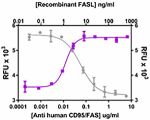
Recombinant FASL induces cytotoxic effect in Jurkat human T ...

 Login / Register
Login / Register 






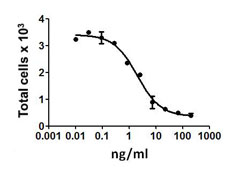
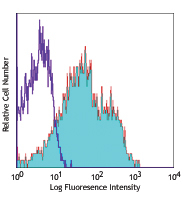

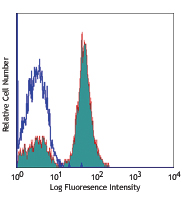



Follow Us